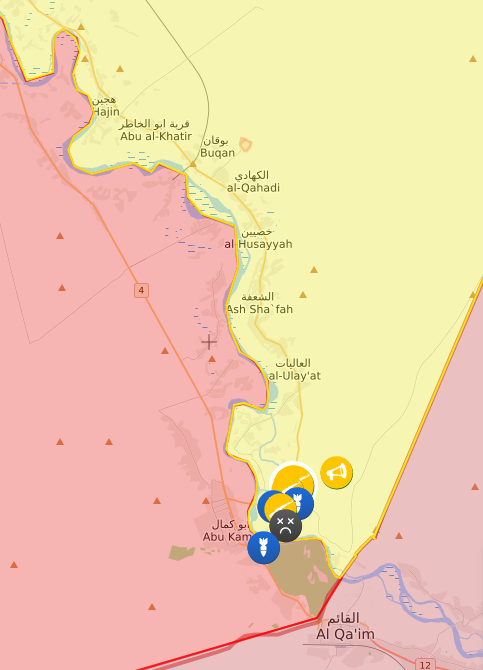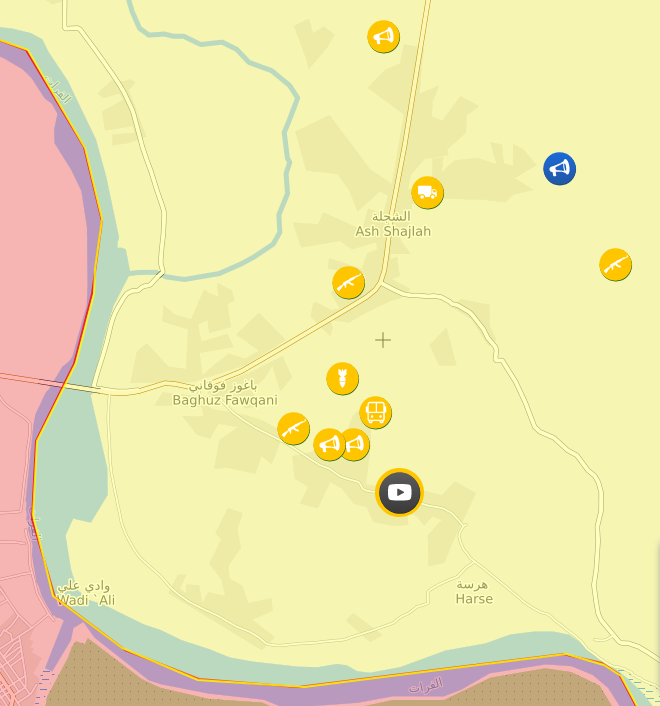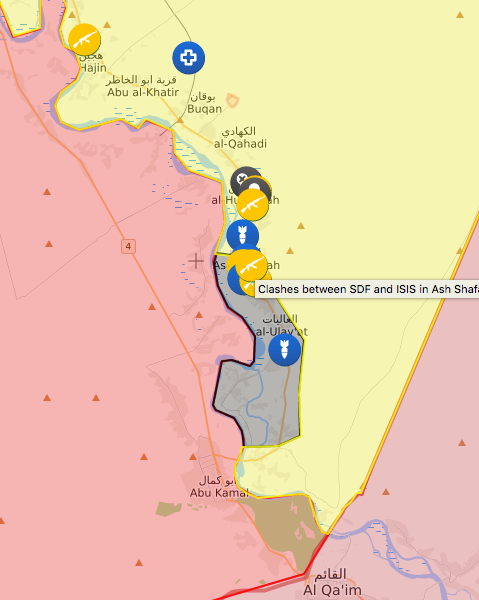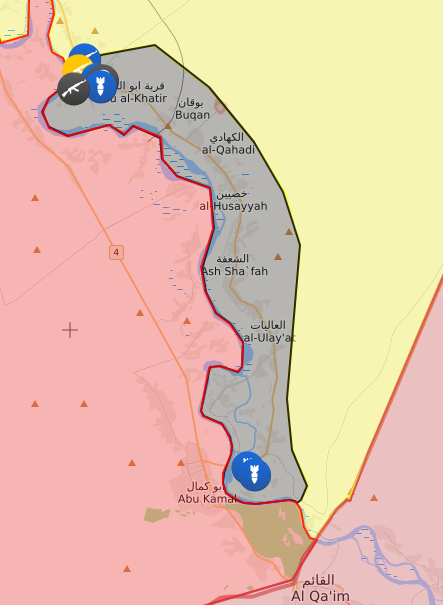The last stronghold of the Islamic State, the former Hajin pocket along the Euphrates, has fallen:
The general commander of the operation by the Syrian Democratic Forces (SDF) to eliminate the Islamic State in eastern Syria on Saturday confirmed the fall of the extremist group in the East Euphrates and said victory would be announced in a few days.
“Da’esh [ISIS] has fallen militarily and their militants are under fire from our fighters in a small space of about 600 square meters,” Chiya Firat, the general commander of the operation launched to defeat the Islamic State in the East Euphrates, told reporters at the Omar Field SDF military base in Deir al-Zor governorate.
Livemap shows no Islamic State territory remaining there, with the Syrian Democratic Forces occupying Baghuz and surrounding territory.

Closeup:

This is what the pocket looked like January 6:

This is what it looked like back on December 20:

Hundreds of Islamic State fighters have surrendered, but expect ongoing mop-up operations where jihadists continue to be be pulled from tunnels and spider holes for several days, as was the case in Mosul.
Back when President Donald Trump declared an end to the Islamic State on December 20, I said he was premature, but only by about 4-8 weeks, and the eight week estimate proved right.
There are other areas of Syria and Iraq that Livemap shows as still under Islamic State control, but I get the impression these are largely desolate areas with no significant population that Syrian and Iraqi authorities have simply failed sweep and declare cleared.
The media, which seemed to avoid reporting success after hard-won success in the war against the Islamic State, not only ignored the final destruction of the Hajin pocket, is now writing articles about how the Islamic State continues as a transnational terrorist organization. This is both true and largely irrelevant. There are plenty of Islamist terrorist groups to worry about, but the Islamic State’s primary claim to legitimacy, the thing that drew foreign fighters from around the world, was it’s presumed legitimacy as an Islamic caliphate:
To be the caliph, one must meet conditions outlined in Sunni law—being a Muslim adult man of Quraysh descent; exhibiting moral probity and physical and mental integrity; and having ’amr, or authority. This last criterion, Cerantonio said, is the hardest to fulfill, and requires that the caliph have territory in which he can enforce Islamic law. Baghdadi’s Islamic State achieved that long before June 29, Cerantonio said, and as soon as it did, a Western convert within the group’s ranks—Cerantonio described him as “something of a leader”—began murmuring about the religious obligation to declare a caliphate.
In late 2014, the Islamic State controlled some 40,000 square miles of territory. Now it controls nothing. Abu Bakr al-Baghdadi is no longer a credible caliph, capable of claiming the allegiance of all Sunnis worldwide, but a loser and a failure, assuming he’s even still alive. Ambitious worldwide jihadists no longer have any incentive to pledge bayʿah to al-Baghdadi, and it’s entirely possible that the ones who previously had will drift away or declare their support to another transnational Islamic terrorist group like al Qaeda.
For this we can thank cost-effective strategy by the U.S.-led coalition to arm and support the Syrian Democratic Forces against the Islamic State, greatly aided by the Trump Administration’s decision to loosen the rules of engagement from what they were under Obama.
The Islamic State wasn’t completely destroyed today, but the last shred of it’s claim to a caliphate was.
Tags: al-Baghdadi, al-Baghuz Fawqani, Foreign Policy, Hajin, Islamic State of Iraq and Syria, Jihad, Military, Syria, Syrian Democratic Forces
[…] did it take so long to clear the pocket? (I first thought the end was a matter of days a month ago.) For one thing, 60,000 civilians were trapped in the pocket, and there have been pauses as a […]